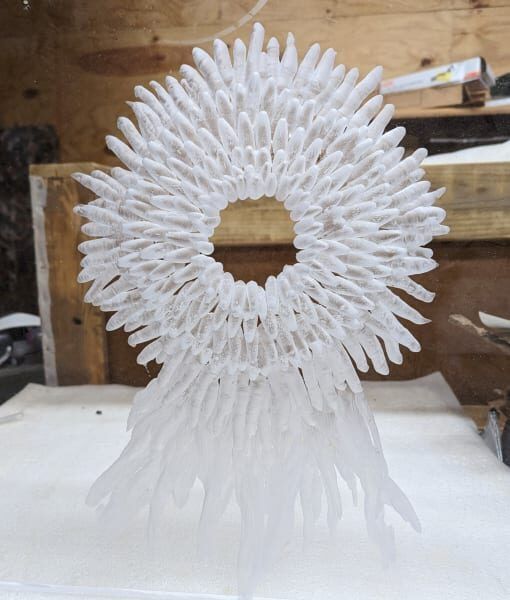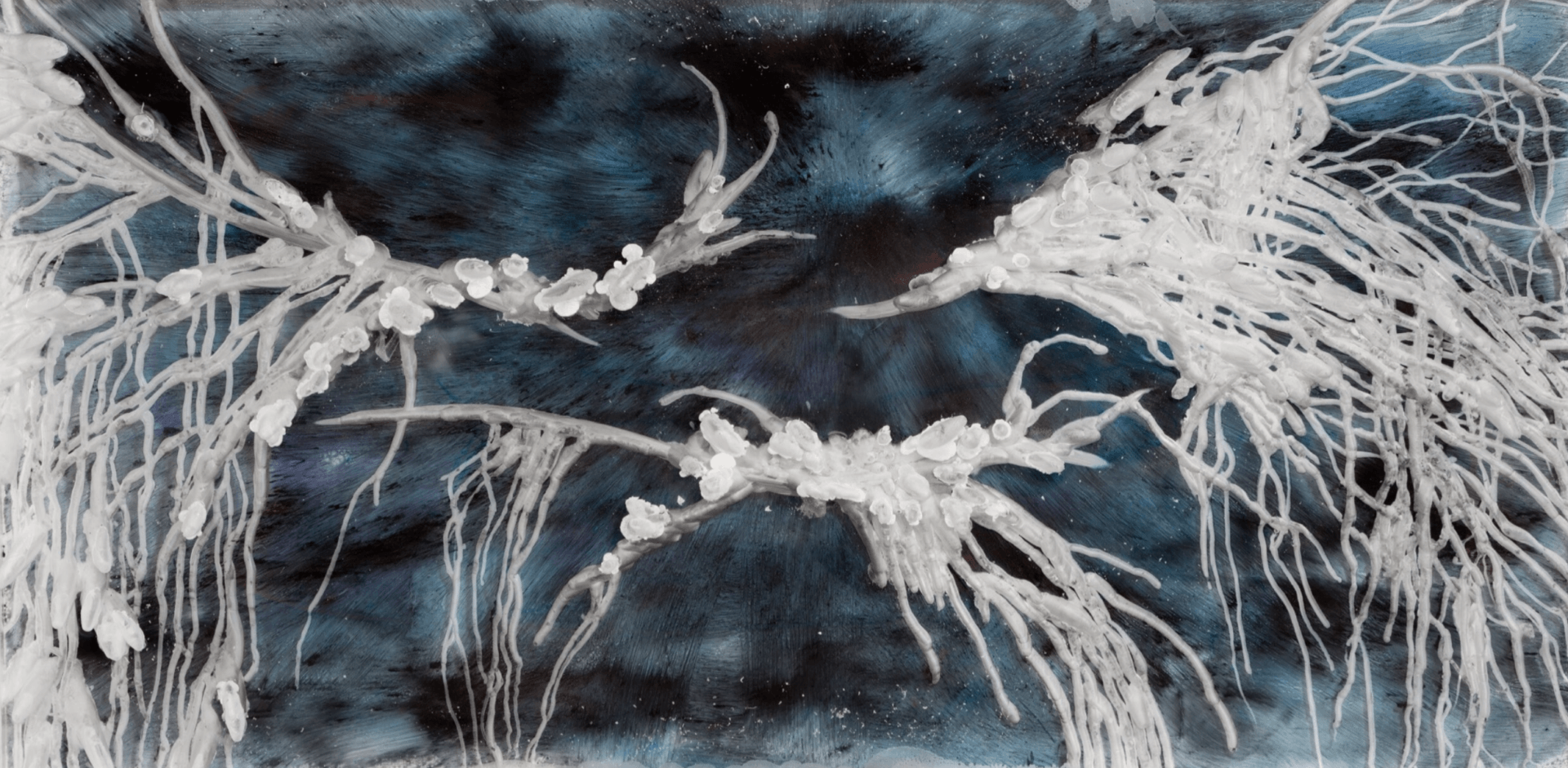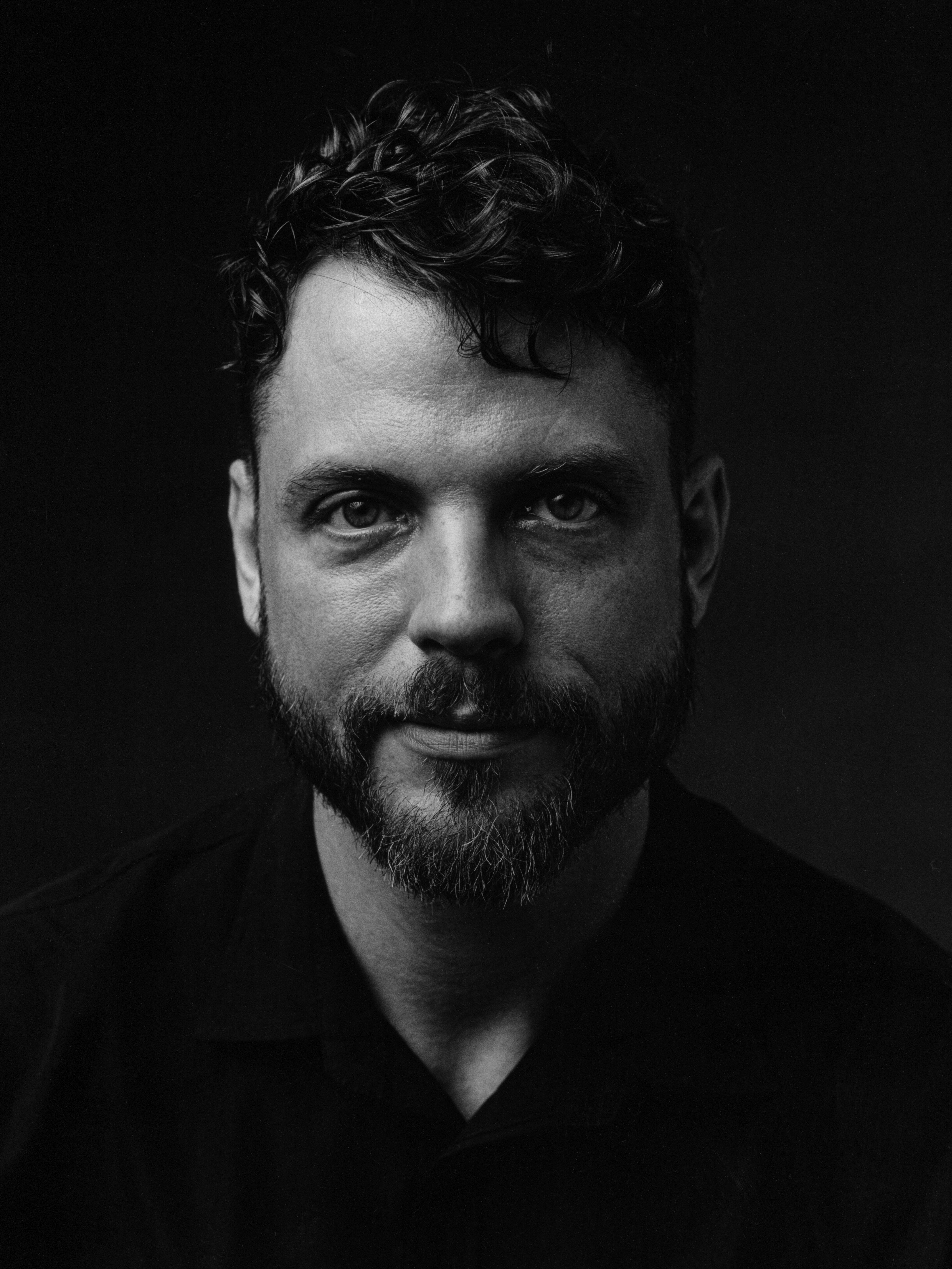
Artist: Robert Lemming
Born in 1982, Robert Lemming is a Tulsa native who moved to Northwest Arkansas as a teenager. Having studied painting and printmaking at Henderson State University, and later finishing his BA degree at the University of Arkansas Fayetteville, Lemming’s work manipulates form and light to explore the nature of motion through the sculptural object. His ongoing series, Fucoid Arrangements, began in 2011 with sculptures that use trace fossils from the Northwest Arkansas region as a primary element.
Robert Lemming
Born in 1982, Robert Lemming is a Tulsa native who moved to Northwest Arkansas as a teenager. He studied painting and printmaking at Henderson State University and finished his BA degree with a sculpture emphasis at the University of Arkansas Fayetteville in 2011. His work has been featured in several solo and group shows in venues such as the Historic Arkansas M…
Read More
Untitled
$0
$
Untitled
2023
Acrylic sheet
24 x 24 x 1 in
ABOUT THE ART
The Fucoid Arrangements series was a bit of a breakthrough for me in 2010 in my late 20s for a number of reasons. Many of the people I knew in my area of Madison County collected fossils that they refer to as bear paws and fucoids, but when I asked questions to elaborate on their nature no one actually knew anything about them other than that they were fossils. They like them for their aesthetic qualities, which I found equally fascinating. I found myself collecting them in summers between university studies. At different points afterwards, I would work for a handful of land survey companies as a field man, and I would hike through very isolated parts of large tracts of property and come across things that haven’t been seen by humans in years from old cars to animal skeletons. These fossils would have occasionally been clearly visible in washed out gullies of the area.
My work often kept me over a mile from the truck over rough and treacherous terrain. The days could be approaching 100° with the humidity factor or below freezing, and I had to carry off a lot of heavy equipment in order to do my job. So if I found something deep in these undeveloped parts of properties like a fossil I had to be willing to carry it back with me throughout the day, and it took a lot of willpower and obsession to bring some of the choice pieces back with me.
Just as my collection of these objects was growing—and I consider myself something of a collector — I was at the University of Arkansas taking some painting and printmaking classes. I took a sculpture class and immediately found myself more drawn to three-dimensional forms and material. I began to think there might be a possibility for these to be incorporated into artworks, but I needed to know more about what they were. I reached out to the geoscience department at the University of Arkansas where I was studying studio art, and they let me know that they were not at all botanical. The fucoid name is actually a reference to an algae fossil that can be found of the same name, but these were fucoid structures. Things that were originally misidentified as something more botanical were actually trace fossils, like a footprint fossil, a memory of a movement.
When our region of Arkansas was an ocean bed hundreds of millions of years ago small arthropods would crawl along the ocean floor ingesting sediment in search of sustenance, these furrows and burrows were a byproduct as they would search for food. These would fill and become the trace fossils that I would find 300 million of years later. I was actually looking at a negative relief mold of the hollows created by these ancient sea creatures, bottom feeders.
Part of the reason was that I could be very controlling in my work’s design and by using elements that were already performed it forced me to make choices and adapt to the forms I had. That was actually a big step for me creatively, to let go of the wheel a little bit and innovate within my limitations.
ROBERT LEMMING
Armed with this knowledge, I started to create works using the fossils as a main component. Part of the reason was that I could be very controlling in my work’s design and by using elements that were already performed it forced me to make choices and adapt to the forms I had. That was actually a big step for me creatively, to let go of the wheel a little bit and innovate within my limitations.
I started welding together multiple sheets of acrylic to get a very sizable thickness and then carving through the back side to make a visual surface that has a clean aquarium like outward facing component in a frame and the back side would be the parts that I carved into with heavy industrial tools like angle grinders and die grinders, drills and different heads for all of the above. Each one made its own type of mark and I couldn’t always control what they would do completely and I couldn’t see what they were doing in real time because I would be working on them back rather than the front of the surface. So I was working in a reductive fashion like relief carving but in a way where I was blind to its qualities. Again, creating works where I have less control and I have to react to the outcomes was more desirable. The overlapping movements and organic shapes created by these tools were my driving force in creating these works, and I draw a very clear line between the fucoid arrangement studies and works with the Burrow series.
Untitled
2023
Acrylic sheet
24 x 24 x 1 in
Untitled
2023
Acrylic sheet
24 x 24 x 1 in

Artwork by Robert Lemming
